
In a world that’s increasingly reliant on technology, the education and corporate learning sector is no exception. eLearning or online learning, has seen a dramatic rise in popularity (and effectiveness) in recent years. These 110+ eLearning statistics serve as powerful evidence of this trend.
This surge is driven by factors like flexibility, affordability, and the ability to cater to diverse learning needs. Let’s not beat around the bush, this is an undeniably effective approach.
For those of you who are evaluating digital learning solutions, you’ve come to the right place! We have gathered 110+ eLearning statistics that demonstrate the power of online learning and show what you can achieve with efficient learning technology solutions.
We’ve also reviewed these statistics to make sure they’re up to date and we’ve provided the most relevant source we can find. Please let us know if there’s any we’ve missed. Oh, and whilst you’re at it, why not download the top eLearning statistics in infographic format?
If these eLearning statistics don’t convince even the most reluctant leaders, we don’t know what will! Let’s get started…
eLearning Industry Statistics
The internet has gradually become more easily accessible all over the world. As a result, the eLearning market has seen impressive growth over the past 20 years. So, let’s take a look at the current online learning industry statistics!

1. By 2030, the eLearning market is forecasted to grow exponentially, reaching over $545.3 billion. This industry is not showing any signs of slowing down!
2. eLearning is the quickest growing market in the education industry, with a whopping 900% growth rate since 2000.
3. And mobile learning is one of the fastest-growing markets within the eLearning industry, with an annual growth of 23%.
4. The online learning platform market (including learning management systems) is seeing slower growth at 5.26% each year. It’s expected to have reached $58.45 billion by the end of 2024.
5. In 1995, just 4% of organisations used online learning. Nowadays, 90% of organisations use some form of eLearning in their training.
6. Indeed, more than 40% of Fortune 500 companies use online learning regularly as part of their training approach.
7. Or, according to this more recent data, 99% of organisations provide eLearning to their employees, in contrast to just 76% only 5 years ago.
eLearning vs Classroom Learning Statistics
The popularity of online learning has skyrocketed. It has easily become the most attractive form of distance education. As a result, more and more organisations and institutions are offering some form of eLearning.
Meanwhile, some leaders and decision-makers are still objecting to online learning due to common misconceptions about its price and effectiveness. As such, we have collected some statistics comparing online and classroom learning.

8. IBM found that their employees learned 5x more material using online learning techniques compared to using offline learning methods.
9. Online learning takes 40% to 60% less employee time than traditional face-to-face learning. This reduces training costs and means that employees can get back to their work tasks quicker. A win-win, if you ask us!
10. Online learning may increase retention rates by as much as 60% compared to the 8-10% retention rate of typical classroom training.
11. The biggest motivators for employees to choose online learning (rather than traditional classroom-based learning) are individual learning pace (95%) and minimised travelling (84%).
12. 90% of students prefer eLearning to classroom-based learning, due to its flexible and accessible approach.
13. Similarly, 85% of these surveyed learners say that their online learning experience was better, or at least equally as satisfactory, as their traditional face-to-face classes.
14. And one more: 77% of surveyed learners believe that remote learning experiences are just as effective as traditional classroom-based learning.
LMS Statistics
A learning management system (LMS), like Growth Engineering LMS, is an online software solution used to support employee training. An LMS helps you to develop and share eLearning units effortlessly. What’s more, it’s useful for anyone with a hunger to learn!
Want to see the power of an engaging LMS? Then keep on reading!

15. At least 83% of organisations currently use a learning management system.
16. An estimated 73.8 million people use learning management systems. And in our opinion, you should be one of them!
17. LMSs are the most commonly utilised learning technology (89%), followed by rapid eLearning tools (44%) and mobile applications (31%).
18. The majority of LMS admin is handled in-house (83%), whilst 23% of organisations choose to outsource their LMS operations.
19. 55% of learning management systems are deployed on the cloud, whilst 45% are on-premise solutions.
20. Unfortunately, 50% of L&D professionals do not believe that their learning systems are fit for their workforce. Ouch!
21. Indeed, only 22.9% of survey respondents claim that their LMS solved the ‘right problems’ for their organisation.
22. 44% of organisations were found to be unhappy with their current LMS.
23. 1 in 4 survey respondents plan to change their LMS provider. As it happens, we have a great recommendation for them!
24. Poor usability (53%) and high cost (44%) were seen as the biggest factors that cause learning leaders to seek out a new and improved learning management system.
Learning Technology Feature Statistics
Learning management systems and learning apps offer a vast toolbox of features, but not all are created equal. To find the perfect fit, you’ll probably have your own selection of ‘must-haves’ and ‘nice-to-haves’. Here, we’ve analysed the data to reveal the features that learning professionals value most.

25. 93% of L&D professionals want to bring live online learning, such as virtual classrooms or live streaming, into their LMS.
26. 82% of L&D professionals say that reporting and analytics are an important feature on their LMS.
27. 90% of learning professionals agree that learner engagement is important within a learning system.
28. 35% of learning professionals would like to incorporate user-generated content within their learning programmes.
29. 58% of L&D professionals want to introduce social learning to their online learning technologies.
30. Functionality was chosen by 39% as the most significant priority when selecting a new LMS. The other considerations focused on reliability (20%), training support (17%), and price (12%).
31. 23% of large companies incorporate VR and 11% use AR. In contrast, only 5% or less of small organisations utilise similar methods.
Learning Technology Evaluation Statistics
Choosing the right LMS or learning platform is crucial. For most L&D teams, it’s a significant investment that shapes future learning initiatives. That’s why we created this checklist to help guide you through the process. We’ve also collected all the statistics we can find about the evaluation and selection process below.

32. There are as many as 800 different LMSs in the market, each with their own feature set and benefits.
33. LMS pricing varies depending on the number of users on the platform. A typical setup fee will range between $4,000 to $40,000. The monthly licence fee will vary between $2 to $5 per user.
34. A recent survey suggests that training budgets increased by 8% in 2024.
35. Only 45.4% of learning professionals consider themselves ‘very knowledgeable’ about LMS selection and implementation before embarking on this process.
36. 23.4% of learning professionals spend longer than 6 months evaluating the LMS market before selecting a supplier. 13.8% spend less than one month.
37. 33.3% of learning professionals change their selection criteria during the LMS buying process.
38. 74.1% of learning professionals use vendor demonstrations to guide their selection strategies. What’s more, 63.3% utilise a testing sandbox and only 42.2% conduct user testing.
39. The key LMS selection criteria are features (81.9%), price (67.5%), and support services (51.2%).
eLearning Creation Statistics
Now that your learning platform is up and running, it’s time to fill it with engaging learning content. You have several options: develop your content in-house using an authoring tool, outsource creation to a third-party, or leverage a pre-built content library. The statistics below may help you to navigate this crucial decision.

40. Companies spend $340 billion on employee training and development, averaging more than $1,500 per employee per year.
41. It takes an average of 197 hours to develop a 1-hour eLearning course. However, the time spent can vary between 49 to 716 hours.
42. A typical 1-hour eLearning course will cost $9,826 for an employee to develop.
43. 75% of L&D professionals agree that they will be developing more custom learning content in the coming years.
44. Content creation vendors will typically charge between £25,000 ($31,200) and £30,000 ($37,440) for 1-hour of content created from scratch.
45. 53% of course creators spend 3 months or longer creating their eLearning courses. This is a painstaking process!
46. According to Podia, the average online course price is $137.
47. Users who pay for their courses spend 10% more time within their course portal than those with free access.
48. Over half (52%) of eLearning course enrolments never translate into active participation.
Microlearning Statistics
Microlearning breaks hefty learning interventions down into smaller chunks. These smaller units are easier to consume, as learners can explore the material at their own convenience and pace.
Got a spare five minutes while waiting for a meeting to start? Great! That’s all the time you need to complete a microlearning unit. In the end, these small efforts will make a significant impact! We already know how powerful microlearning can be, but check these stats out for yourself.

49. How much training could you get done in under 30 minutes? On average, employees can dedicate just 1% of their workweek to professional development. That’s the equivalent of 24 minutes a week.
50. 49% of employees say they don’t have time to spare on learning.
51. According to the Forgetting Curve, introduced by German psychologist Hermann Ebbinghaus, we forget a whopping 90% of everything we learn within 7 days if we don’t try to retain the information.
52. Research shows that microlearning is 17% more effective in transferring knowledge than traditional classroom training.
53. What’s more, bite-sized content has been shown to increase knowledge retention by 20%. As such, microlearning is the key to maximising training time and effectiveness.
54. People also prefer learning in short bursts. 58% of employees said they would be more likely to do online training if the content was broken down into smaller chunks.
55. One of our Fortune 500 customers saw the impact of microlearning first-hand when they implemented our mobile app solution, Growth Engineering Learning App. Initially, their target was to encourage users to spend 20 minutes on the app each month. The mind-blowing results show that the actual average reached 2 hours and 23 minutes.
56. According to Dr Jimenez, microlearning can cut development costs by 50%. On top of that, it can increase the speed of development by 300%. Impressive!
57. Microlearning now accounts for more than 60% of all online learning experiences. That alone speaks for itself.
58. 47% of L&D teams planned to deploy microlearning programmes in 2024.
eLearning Approaches Statistics
There’s more than one way to crack an egg. While traditional eLearning excels, innovative methods like social learning, mobile learning and mentorships (delivered through online platforms) are making waves. Dive into the eLearning statistics below to see how these approaches are revolutionising education.
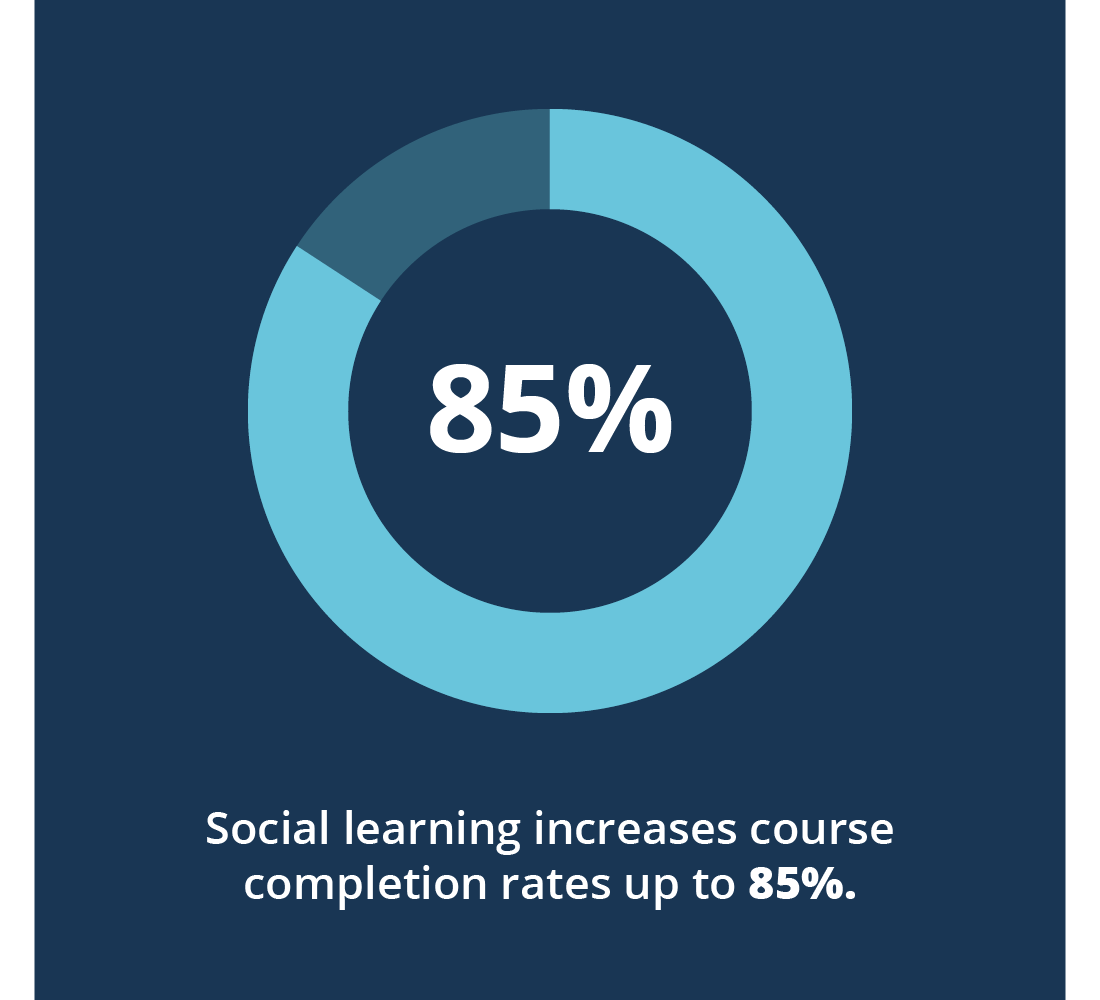
59. Social learning has been shown to increase course completion rates by up to 85%.
60. Social learning contributes an impressive 75:1 ROI over traditional web-based training.
61. 70% of learners are more motivated to learn when they use mobile devices instead of computers.
62. 64% of students use their mobile devices for instructional purposes.
63. 47% of companies are investing in career mentoring and coaching.
64. Only 33% of organisations have internal mobility programmes.
65. Adaptive learning can increase test scores by as much as 62%.
Gamification Statistics
Gamification means taking the mechanics that work so well in games and applying them to other contexts, such as L&D. Our mission here at Growth Engineering is to fight against dull online learning, and gamification is one of our favourite allies!
Gamification brings the joy back into online learning by adding fun and engaging game elements. Still wondering how effective it can actually be? The following statistics show how gamification can boost online learning!
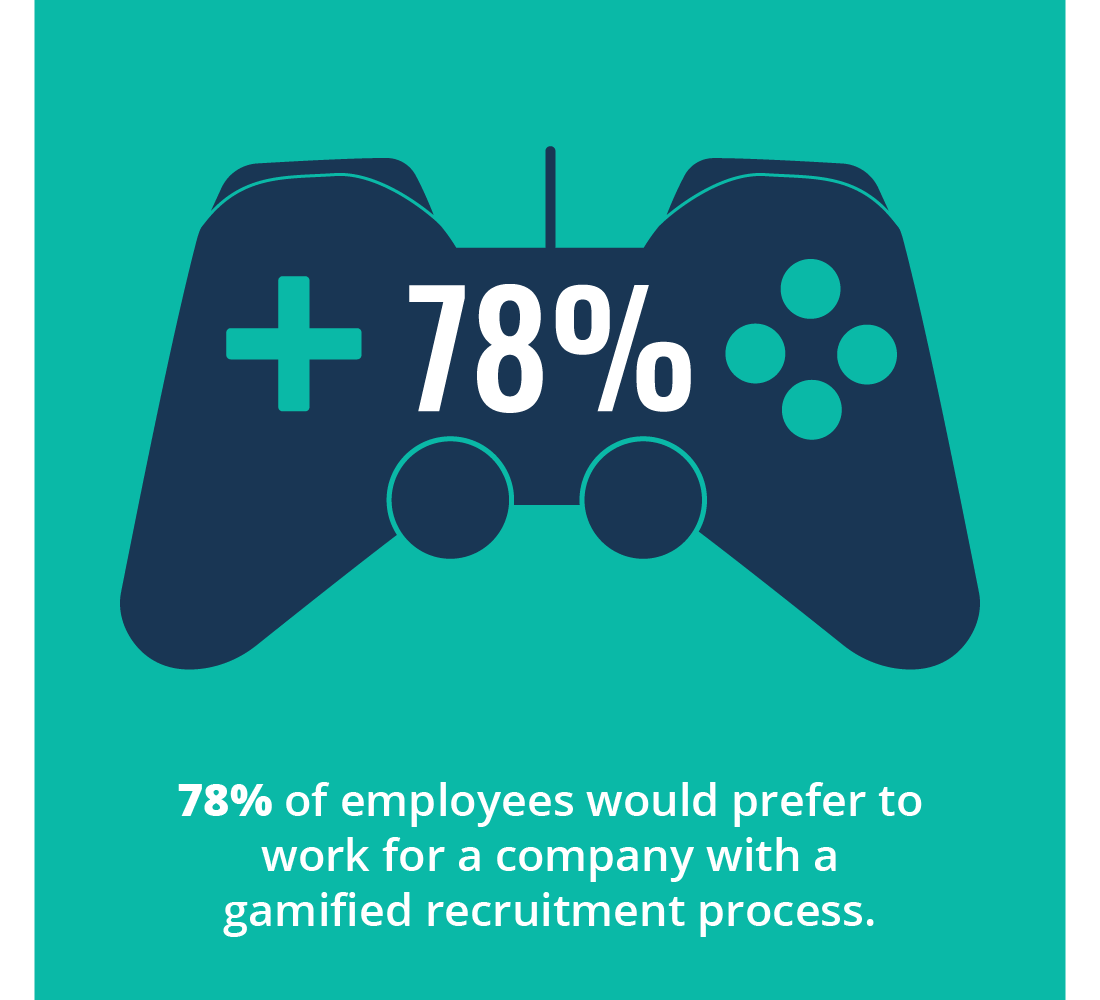
66. 78% of employees agree they would be more prone to work for a company that uses gamification in the recruitment process.
67. 89% of employees estimate that they would get better results if their work was more game-like. And can you blame them? After all, playing games is fun!
68. Gamification also has a big impact on our productivity! In fact, 72% of employees believe that gamification motivates them to work harder.
69. T-Mobile, for instance, learned how gamification can increase employee engagement. Just six weeks after introducing game mechanics, T-Mobile awarded 187,000 achievement badges to their learners!
70. 26% of learners wish their LMS had gamified elements. That’s more than one in four users!
71. That doesn’t come as a shock since 95% of employees say they enjoy using gamified systems.
72. It takes 400 repetitions to make a new synapse in the brain. Alternatively, gamification can reduce the needed iterations to just 20.
73. So, it is no surprise that gamification can boost learner engagement by up to 60%!
AI Statistics
Artificial intelligence (AI) is a game-changer for learning professionals and L&D teams. We’ve already seen an explosion of AI tools designed to streamline workflows, reduce costs and enhance learning outcomes. Words can’t fully capture the magnitude of this opportunity, but the data below offers a telling glimpse.
74. 4 in 5 learning professionals want to learn how to use AI in their workflows.
75. Just 12% of L&D professionals think the impact of AI in learning is overhyped.
76. 47% of LMSs aimed to utilise AI tools and capabilities by the end of 2024.
77. Almost half of students (47%) claim that AI has already had a positive impact on their overall learning experience.
78. Research shows that AI-powered personalised learning solutions can improve assessment scores by 8.1 points and increase engagement up to 42.3 minutes per session.
eLearning Business Impact Statistics
We’ve seen how popular and effective eLearning is, so let’s look into the impact it can have for your business. Investment in an innovative LMS can result in better productivity, higher employee engagement and reduced training costs.
However, it’s worth noting that no one solution will fit all. That’s why our learning technologies are fully customisable to suit your business objectives.
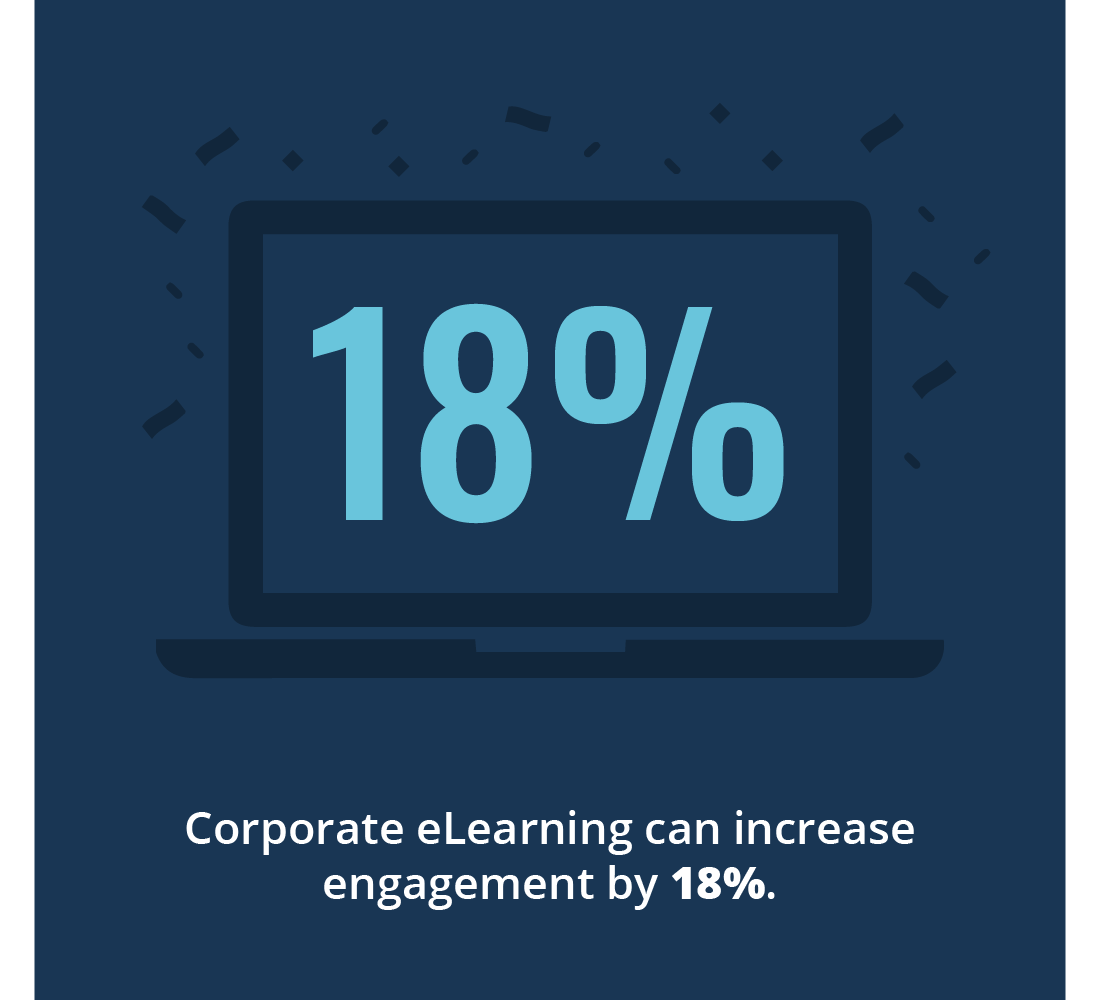
79. Here’s a big one. Corporate eLearning can increase engagement by as much as 18%!
80. AstraZeneca, an international pharmaceutical company, needed to teach 500 sales employees about a new product. 95% of their learners completed all available training modules.
81. Hendrick Automotive Group, the largest privately owned automotive dealership in the US, also saw amazing engagement after replacing their old fashioned LMS with our engagement-focused platform. As a result, the organisation saw over 750,000 visits to their new platform in the first eight months.
82. 5,500+ L’Oréal Travel Retail learners using Growth Engineering Learning App generate 18,400+ social engagements every day. Territories using the app solution have seen an average 20% increase in sales revenue.
83. 92% of EE learners using Growth Engineering LMS agree that their digital skills have increased.
84. HP learners using Growth Engineering Learning App complete an average of 19.3 Knowledge Contests every month.
85. GAME Retail’s LMS generated a 94.3% increase in average basket size, linked to a specific training campaign.
86. Learners on Caffè Nero’s Learning Hub view 16,000+ eLearning units per month. Brewtiful!
87. In fact, 42% of organisations experience an increase in revenue after introducing eLearning to their workplace. Are you convinced yet?
88. IBM found that every dollar invested in online training results in $30 in increased productivity. Consequently, after moving to online learning, IBM saved nearly $200 million!
89. Dow Chemicals saved $34 million by switching to eLearning tools. This was driven by reducing training costs from $95 per learner to just $11 per learner.
90. Therefore, it comes as no surprise that 72% of organisations believe that using online learning creates a competitive advantage for their business.
Learner Sentiment Statistics
Understanding how your learners think, feel, and approach online learning is key to maximising their success. What makes them tick? What are their needs and preferences?
By delving into the data below, you’ll gain valuable insights that help you to capitalise on your learners’ motivations and refine your learning experiences. A thriving online learning environment awaits!
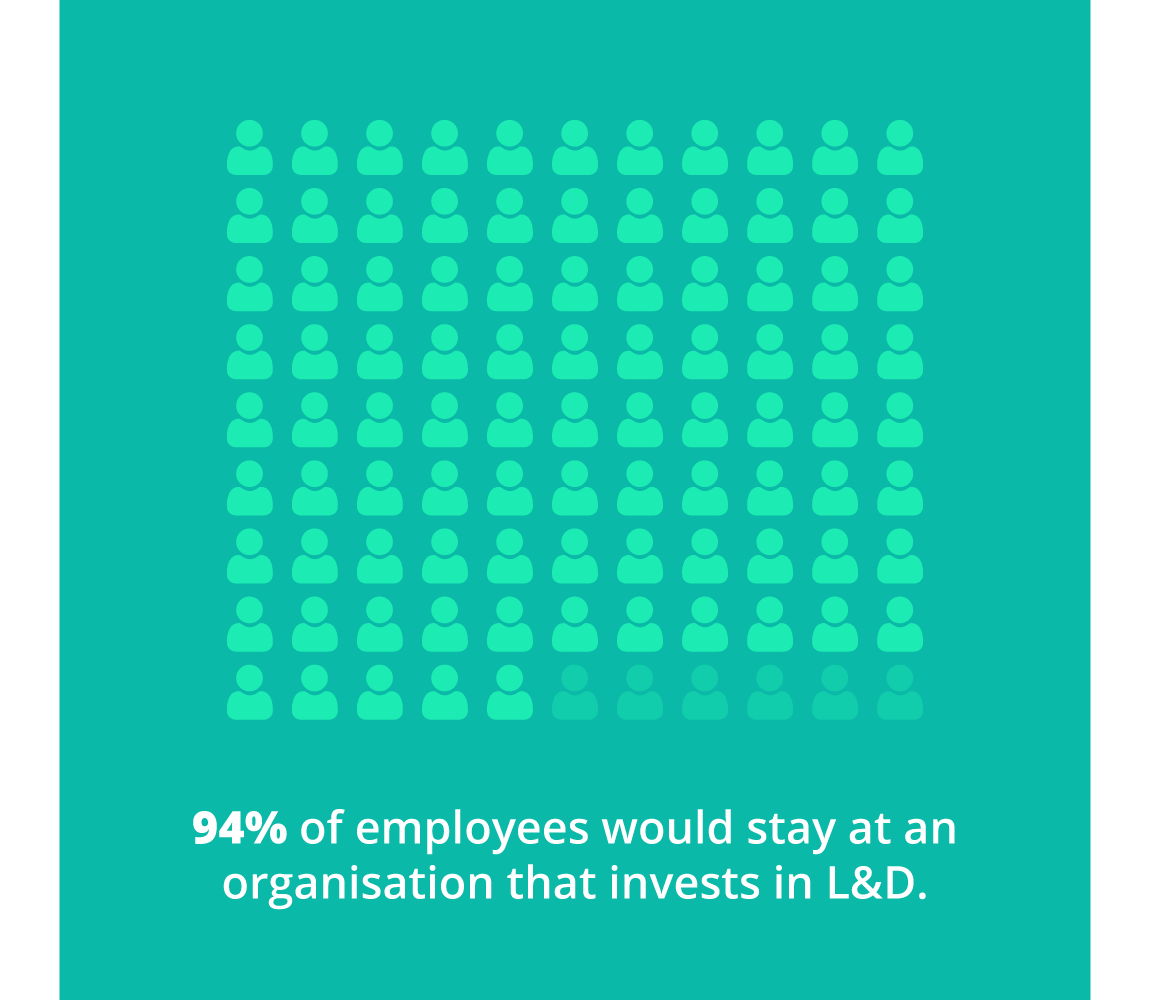
91. Let’s start with a no-brainer! 94% of employees say that they would be more willing to stay in an organisation that invests in employee training and development. That alone emphasises the importance of an efficient approach to L&D.
92. 7 in 10 people say that learning opportunities boost their sense of connection to their organisation.
93. 8 in 10 people say that ongoing learning initiatives add purpose to their jobs.
94. 53% of Gen Z value learning for career progress, in contrast to 37% of Millenials, Gen X and Baby Boomers.
95. 55% of employees say they need additional training to perform better in their role.
96. 75% of employees are satisfied with the learning and development opportunities provided by their organisations.
97. As many as 33% of learners lack motivation to complete their training and 25% of learners lack the time they need. Perhaps learning in the flow of work is the solution?
98. 77% of global workers are ready to learn new skills, and 74% see training as a matter of personal responsibility.
99. 60% of students report that online learning has had a positive impact on their soft skills.
100. 94% of online learners prefer to study at their own pace.
Other eLearning Statistics
Congratulations, we’ve almost made it to the finishing line. These eLearning statistics didn’t fit neatly into any of the previous categories, but they still offer valuable insights.
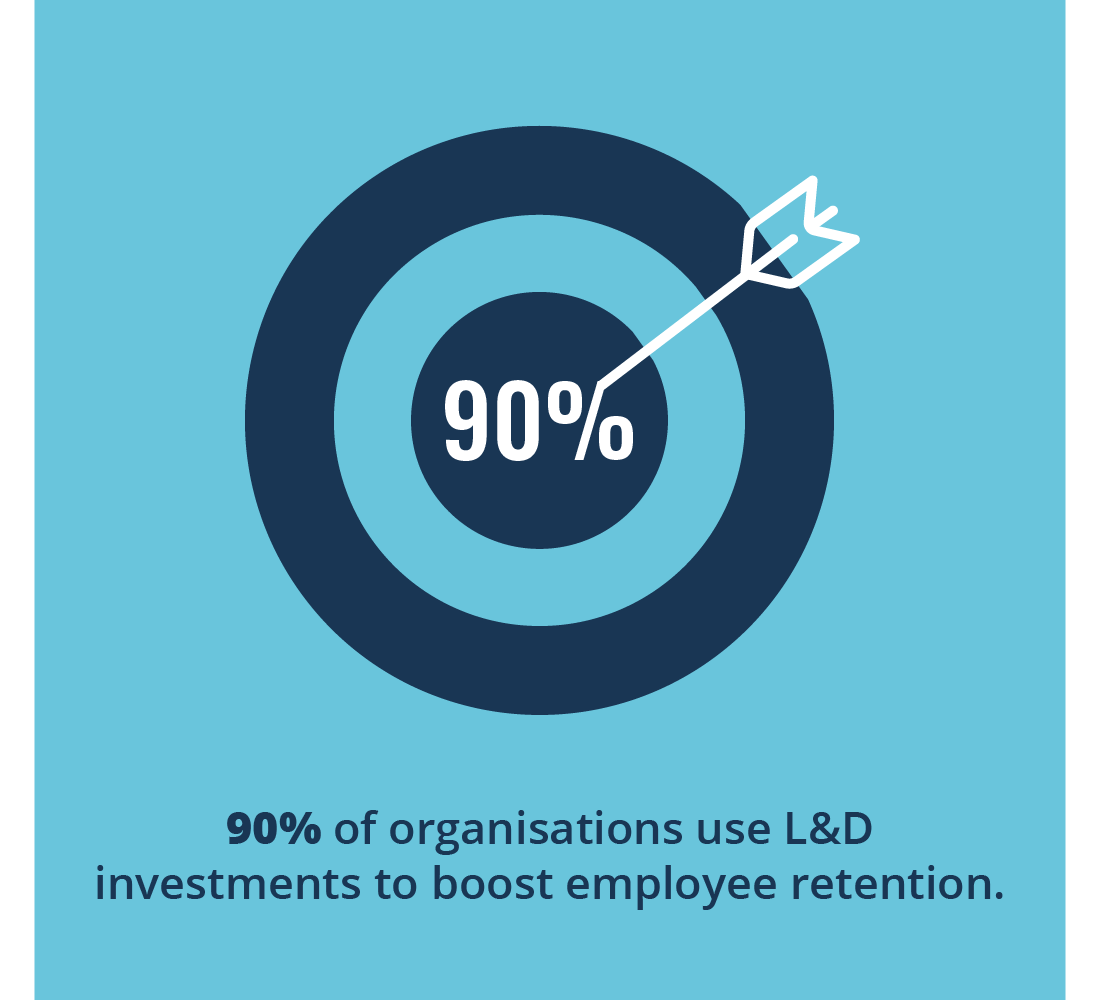
101. Focus on employee retention is at an all-time high, with 90% of companies prioritising learning initiatives as their leading strategy to keep their employees on board.
102. While we care about you and your learners, we also care about our planet! Online learning can cut energy consumption by 90%.
103. On top of that, eLearning produces 85% fewer CO2 emissions per person. Amazing, huh?
104. To quantify that, eLearning solutions reduce CO2 emissions by 5-10 tons per semester, for every 100 students.
105. 91% of L&D professionals agree that soft skills are increasingly important.
106. 59% of L&D professionals identify upskilling and reskilling as the top priorities for their training programmes.
107. The skills gap could create a startling $8.5 trillion deficit in revenue over the next decade.
108. Despite this, 46% of companies have no strategic plan in place to address their skills gaps.
109. 91% of managers believe that eLearning will help to close skill gaps within their teams.
110. 63% of L&D professionals agree that L&D now has a seat at the executive table.
111. 61% of L&D professionals say they lack the time necessary to excel in their roles. eLearning can help you to be more efficient.
Final Words
As these 110+ eLearning statistics show, this industry has experienced an immense growth period in the last 20 years. More importantly, the market is not showing any signs of slowing down! With AI playing an increasingly prominent role, the future looks very promising indeed.
We hope these insights and statistics help to guide your decisions, shape your strategy and optimise your learning initiatives. If you’ve got any more eLearning statistics to share with us, please let us know. In the meantime, thanks for reading! We’ll see you in our next exploration of the exciting world of eLearning.
As you’ve seen, gamification is a remarkably effective approach. Ready to unlock the power of game mechanics? Download ‘The Ultimate Guide to Gamification in Online Learning‘ now to discover strategies that are proven to boost learner engagement.









